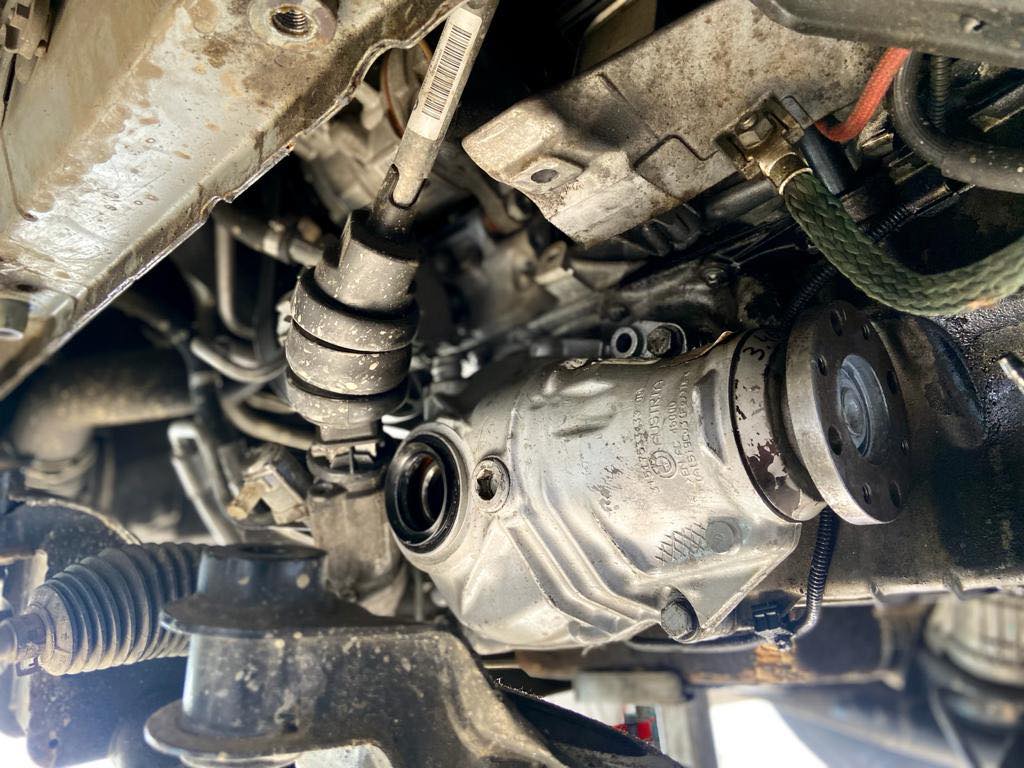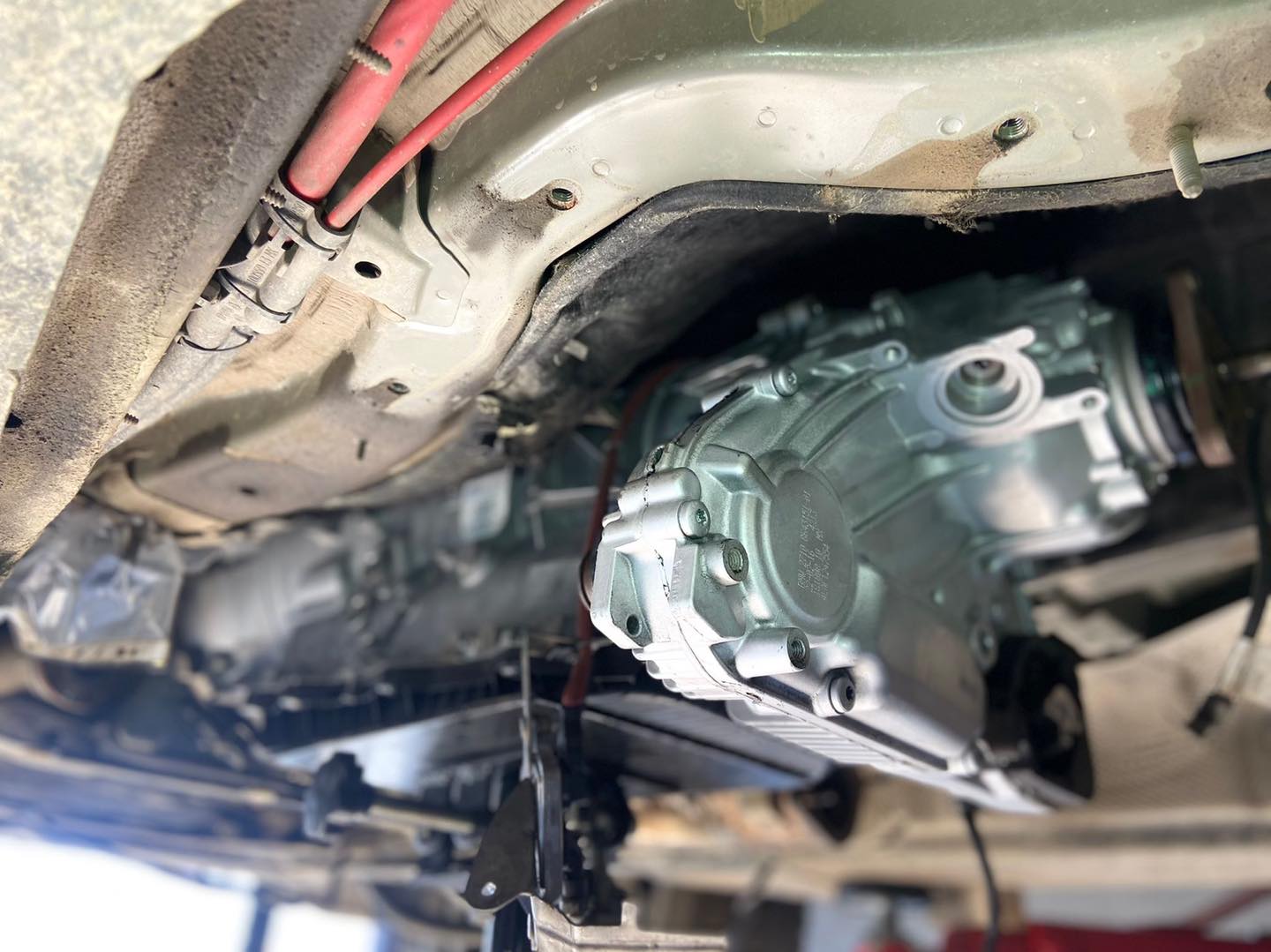There are certain symptoms that you can follow with your eyes and ears to find out when the transfer case is defective. Any of the following problems could indicate a faulty transfer case and you should have your vehicle serviced immediately.
What is the function and purpose of the transfer case?

Machines that are designed with four-wheel drive or all-wheel drive depend on the transfer case to transport the power generated by the transmission to the appropriate axles of the machine using the drive shafts.
This is the main purpose of the transfer case and the reason for its importance in your BMW.
For BMW, keeping all the wheels of the car running smoothly between them is an essential task.
A faulty transfer case that is not working properly can lead to serious performance issues that need to be resolved immediately to restore your BMW and prevent further damage.
Symptoms of a defective transfer case are:
1. Gearshift problems
One of the most immediate and worrying signs that could indicate a faulty transfer case involves the difficulty of changing gears.
You may notice a reluctance to engage with certain steps. In some cases, this problem only occurs when traveling at certain speeds, and this problem may be due to a simple lack of lubrication.
Another thing to consider is checking how you need to change gears in your system and in your specific vehicle, see your vehicle’s owner’s manual.
For example, there are certain circumstances in which you need to take an initial step before moving on to a certain step.
A good example in some vehicles is when you switch to four-low; In this case, you must put the vehicle in neutral before attempting to switch or change gears.
Remember that it shows that changing gears may look different depending on the control system of your vehicle’s transfer case.
For example, if your car controls the transfer case using a body computer, you will notice symptoms different from another car that relies on electrically switched power to control the transfer case.
2. Problems with staying in 4-wheel drive
A faulty transfer case may come in and out of 4-wheel drive alone. This indicates an inability to stay in a driving mode, which may damage the transfer case, other systems in the vehicle or cause an unsafe driving situation.
If you experience problems with all-wheel drive mode, you are probably experiencing an internal failure of the transfer case. When the vehicle’s gearbox is working properly, it will automatically switch between two- and four-wheel drive modes as needed. It also sends power to all four wheels.
If it doesn’t work properly, you may find that your car is constantly switching between the two modes, that it can’t stay in all-wheel drive mode at all, or that your car continues to go out of four-wheel drive mode.
This can be a safety hazard as it can cause you to lose control of your car while driving. This can be very dangerous, especially if you are driving on a slippery surface.
Although the issue may be related to the transfer case, there may also be an issue with the drive shaft or differential that you need to check.
Thus, before you see that the main culprit is a defective transfer box, you should ask a professional mechanic to inspect the vehicle and identify the problem accurately.
3. Unusual noises
If you hear unusual noises coming from the transfer case, it is a good indication of internal damage to the transfer case. If this is the case, it’s important to get your car serviced as soon as possible. Failure to do so may lead to even more serious problems along the way.
Unusual noises can be caused by a variety of problems, not just a faulty transfer case, including lack of fluid, low fluid levels, worn gears or bearings, and bent shafts can cause strange noises.
All of these problems can cause the gears to grind or damage the bearings, which will create a loud, annoying noise. If you hear strange noises coming from the transfer case, it’s important to check it as soon as possible.
4. Liquid leakage
Leakage under your transfer case is often one of the most common symptoms for a defective transfer case. Liquid may leak from the gaskets or bearings inside the unit and may cause serious damage if left untreated.
If you notice liquid leaking under the transfer case, there may be a problem with the transfer case gaskets or gaskets. This can cause all sorts of problems, including reduced fuel efficiency, overheating and damage to the transmission and other components.
Keep in mind that leaks on more modern vehicles take longer to display than any vehicle with a manual transmission. Thus, even if you confirm that there is no visual leakage under the transfer case, you should still inspect the machine and ask a professional mechanic to identify the actual problem.
5. Problems with coupling and disengaging four-wheel drive
If you experience problems with four-wheel drive coupling and disengagement, this symptom may indicate a faulty transfer case. When the four-wheel drive system is working properly, it should engage and disengage quickly and easily.
If there is a problem with the transfer case, it may endanger the operation of the all-wheel drive system.
You may find that the four-wheel drive system cannot engage or disengage, that it engages and disengages at the wrong time, or that it locks in one way or another.
A faulty transfer case can cause problems that can be very dangerous, as they can cause you to lose control of your car while driving.
If you experience problems with the four-wheel drive system, it is important to pay a visit to the service to make sure that the transfer case is not defective as soon as possible. The sooner you solve the problem, the safer you will be on the road.
6. Automatic transmission warning light
If the automatic transmission warning light comes on, you may be dealing with a faulty transfer case. The light may come on because the transfer case does not transfer the transmission power correctly, or because there is a problem with the fluid level or pressure.
If the automatic transmission warning light comes on, it is important that the vehicle is inspected by a qualified technician as soon as possible.
There may be a problem with the transfer case that requires immediate attention. Failure to troubleshoot a faulty transfer case can result in severe damage to the transmission and other components.
Can you drive with a defective transfer case?
Should you drive your car with a faulty transfer case? Driving a car with a transfer case that has a mechanical problem is a bad idea.
If you continue to drive with a gearbox that has a serious mechanical problem, you could damage it beyond the repair point and possibly damage your transmission, drive shafts and axles in the process.

Can a faulty transfer case damage the transmission?

Because the transfer case works closely with the transmission, many people contact us asking if the transfer case is causing significant transmission problems or not.
It is not uncommon to have major vehicle transmission problems due to a problem with a faulty or defective transfer case.
Whenever you are dealing with the symptom of the transfer case system, you should take it seriously and visit the nearest repair shop to resolve the issue as soon as possible.
How to act to prevent a defective transfer case
Continuous care of cars such as your BMW should never be neglected, and with the help of a BMW specialist, you will be able to solve problems more efficiently and accurately.
In addition to hiring a BMW specialist, here’s what you can do:
- Follow the routine maintenance practices described by the BMW manufacturer in the operating instructions.
- Do not let the symptoms of the transfer case or other transmission problems go unnoticed for a long time.
- Pay close attention to how your BMW operates on a daily basis so that you can detect early warning signs for a defective transfer case.
- Make sure that your BMW service only uses the highest quality spare parts.
The benefits of proactive, preventive care

Here are some of the benefits of keeping up with routine maintenance and tracking performance issues:
- Keep the value of your BMW
- Maintains impeccable driving experience
- It keeps your car running reliably and optimally at all times
- It ensures your safety and security on the road
If you live in the Arad area and you are looking for an honest and accessible service, which is addressed to BMW drivers, the experts from Ubydeal are at your disposal.
A faulty transfer case is a serious problem that can be costly to repair if it is not resolved for a long time.
To find out more about our service expertise or to schedule a diagnostic meeting, please contact us.+40 742 140 476
How much does it cost to repair a defective transfer case?
Unfortunately, repairs to a defective transfer case are not a cheap job and can cost you between 2500 and 3000 LEI . This price is representative, costs may vary from car to car depending on the diagnosis you receive.
Keep in mind that the cost of labor depends a lot on the repair shop you choose, which means that it can increase if you decide to go to the dealer and be much lower if you go with a small repair shop.
Although you can save a lot on labor costs by going to a small repair shop, many people who drive modern vehicles prefer to visit the branded dealership to ensure high quality. Sometimes, if the driver does not have a certain level of skills, he could introduce major problems that could cost you thousands of lei.
Therefore, car experts recommend that you balance the amount of money you want to save with the quality you are looking for, which depends a lot on the type of repair you want to make.
Is it worth repairing a faulty transfer case?
This is one of the most frequently asked questions about repair costs for a defective transfer case. The answer to this question depends largely on your own circumstances and the value of your vehicle.
The first step in answering this question is to evaluate and calculate the total value for all possible repair costs, including other costs associated with even regular maintenance.
Once you have a total number, the next step is to compare it to the total value of your vehicle.
Please note that the value of your vehicle will not increase significantly with these repairs and is in line with the cost of these repairs. It may not be worth repairing this vehicle.
Similarly, if you find that your repair costs are close to 75% or more of the value of your vehicle, it is not always advisable to repair this car , and instead you should sell it to any potential buyer.
You may also be interested in:





